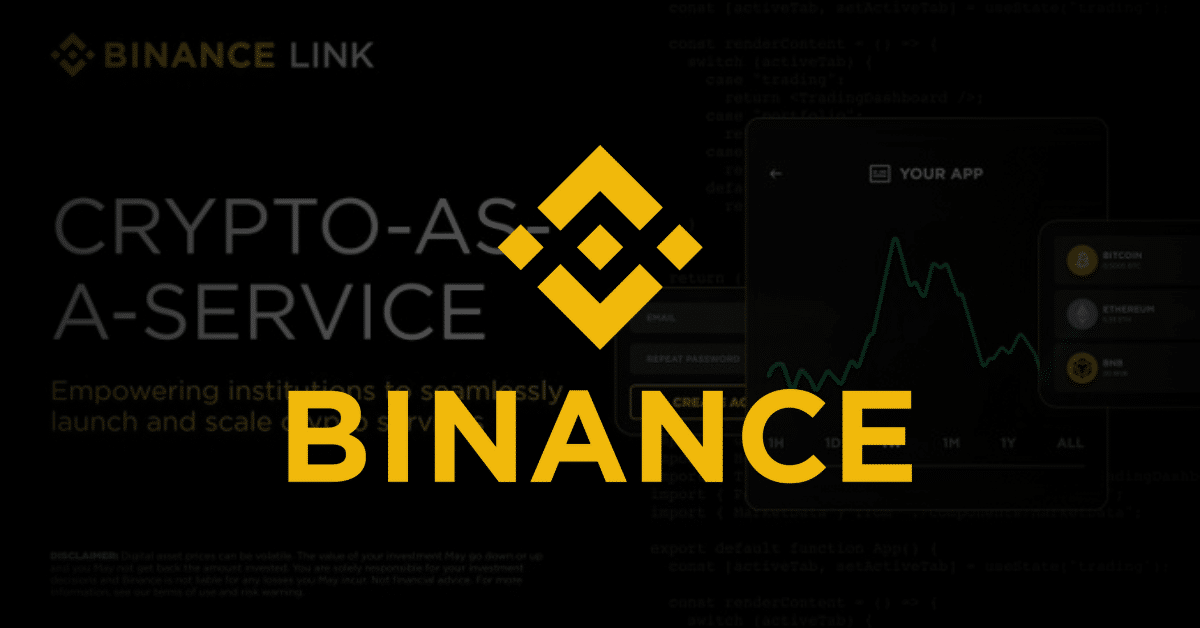Key Takeaways
- Binance launched its own white-label Crypto-as-a-Service (CaaS) solution for licensed banks and brokerages, following competitors like Coinbase.
- The service provides TradFi firms with Binance’s liquidity, custody, compliance, and trading engine, while the institutions keep control of the front-end brand.
- CaaS allows TradFi to quickly offer direct crypto access, mitigating the high cost, time, and risk of building proprietary crypto infrastructure.
The convergence of traditional finance (TradFi) and the digital asset sector is accelerating with Binance’s introduction of a white-label “Crypto-as-a-Service” (CaaS) solution.
Binance stated that client demand for digital assets has reached a point where offering crypto access is “no longer optional” for major financial institutions. Recognizing that building this capability in-house is “expensive, time-consuming, and potentially high-risk,” the CaaS model provides a “faster path to market.”
Crypto-Native Tech Over In-House Development
The solution is a ready-made suite that connects TradFi entities to Binance’s powerful back-end. This includes access to its spot and futures markets, extensive liquidity pools, advanced custody solutions, and essential compliance and settlement tools.
Critically, institutions maintain full ownership of the front-end, preserving their brand identity, user experience, and direct client relationships. This split makes the migration to digital assets manageable and efficient.
Specialized Features for Institutional Clients
Binance’s offering is tailored to institutional needs, featuring an internalized trading capability. This system allows financial firms to route and match client orders within their own internal systems, helping them efficiently handle order flow and liquidity before utilizing Binance’s global markets when necessary.
To aid operations, the CaaS includes a sophisticated management dashboard that offers detailed visibility into trading activity, client onboarding, asset flows, and trade distribution breakdowns. This level of granular control enables institutions to monitor and optimize their new crypto services efficiently.
The service is scheduled for a wider rollout in the fourth quarter.
Final Thoughts
Binance’s CaaS solidifies its position as a key infrastructure partner for global finance. By dramatically lowering the barrier to entry, this white-label solution is poised to significantly accelerate the mainstream adoption of direct crypto trading among established financial client bases.
Frequently Asked Questions
What is a white-label crypto service?
It is a ready-made solution built by one company (Binance) that another company (a bank) can rebrand and offer to its clients as its own.
What back-end functions does Binance provide?
Binance powers the trading engine, liquidity, custody, compliance, and settlement for the institutional client.
Why is internal development discouraged?
Building proprietary crypto infrastructure is considered too expensive, time-consuming, and high-risk in terms of compliance and operational security for quick deployment.




























